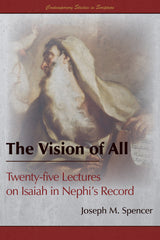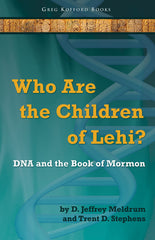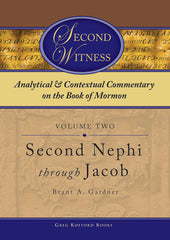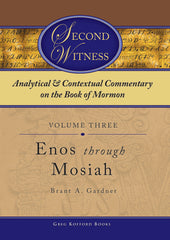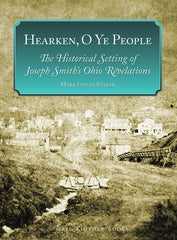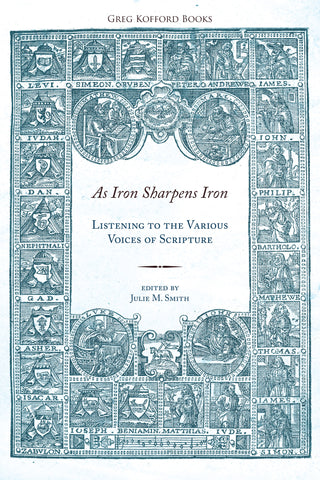News
Q&A with Joseph M. Spencer, author of The Anatomy of Book of Mormon Theology November 14 2021
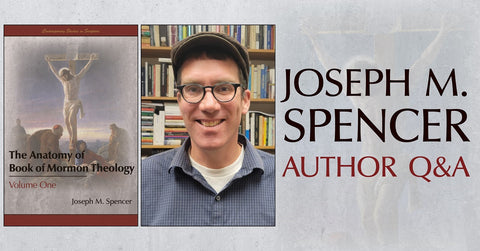
Joseph M. Spencer, November 2021
New Year's Ebook Flash Sale December 29 2020

As we welcome 2021, we are pleased to offer discounted prices on select ebooks on scripture, doctrine, and community. This sale runs from January 1–4 and is available for both Kindle and Apple ebooks.
Sale ends Monday, Jan 4.
Doctrine| Scripture | ||
|
$17.99 |
$27.99 |
$22.99 |
|
$18.99 |
$22.99 |
$23.99 |
| Doctrine | ||
|
$30.99 |
$17.99 |
$9.99 |
|
$26.99 |
$16.99 |
$18.99 |
| Community | ||
|
$18.99 |
$14.99 |
$18.99 |
|
$23.99 |
$18.99 |
$9.99 |
2020 Holiday Gift Guide November 11 2020
This holiday season, we are focusing on themes of scripture, doctrine, and community. Below is a holiday buyer's guide highlighting a few of our most popular titles.
To see our Black Friday Sales, click here.
Scripture
 |
With the Doctrine & Covenants being the 2021 focus for Come Follow Me, Mark Lyman Staker's award-winning history, Hearken, O Ye People, is the perfect gift for those interested in the historical context behind the revelations Joseph Smith received in Ohio. A perfect compliment to your Come Follow Me study. |
 |
One of our most popular titles! The Lost 116 Pages does more than tell the history behind the missing manuscript pages from the early translation of the Book of Mormon, it also uses the best scholarly tools available to analyze internal and external evidence and piece together what may have been in the lost pages. The result tells us as much about the existing Book of Mormon as it does the lost pages. Perfect for those who enjoy taking deep dives into scripture and history! |
 |
Award-winning Book of Mormon scholar, Brant Gardner, looks at Joseph Smith's translation process of the Book of Mormon. The Gift and Power analyzes not only the mechanics of the translation process, but also asks how closely Joseph Smith followed the original Nephite writings. This is the perfect book for those interested in how the Book of Mormon was produced, affirming that it is an ancient text miraculously brought forth by the gift and power of God. |
 |
The Second Witness series by Brant Gardner is lauded as the most comprehensive Book of Mormon commentary in existence. Brant uses his extensive knoweledge and backgroud into Mesoamerican anthropology and intertextual studies to bring the Book of Mormon to life for modern readers. Second Witness can be purchased as a set or individual volumes. A must have for the serious student of the Book of Mormon. |
 |
Authoring the Old Testament launched our Contemporary Studies in Scripture series, which utilizes the best tools of biblical scholarship to speak to a Latter-day Saint audience. Authoring the Old Testament introduces Latter-day Saint readers to the documentary hypothesis and offers a faith-affirming approach to Hebrew Bible authorship in line with contemporary scholarship. |
 |
Continuing with the Contemporary Studies in Scripture series, The Vision of All by Joseph Spencer has been a consistent top seller. The Vision of All analyzis Nephi's use of Isaiah writings in the Book of Mormon, offering a reader-friendly explanation of these challenging prophetic passages. Perfect for readers who want to understand more about Isaiah's writings as well as Nephi's inclusion of them in the Book of Mormon. |
Doctrine
 |
Blake T. Ostler's Exploring Mormon Thought series is the first series ever published by Greg Kofford Books and is still considerd the standard by which faith-affirming Latter-day Saint philosophy is measured. For readers interested in deep philosophical questions regarding the nature of God, human agency, mankind's divine potential, and the problem of evil and suffering in the world, this is the series to get! |
 |
Perhaps of all questions asked about Latter-day Saint doctrine and history, the historic practice of plural marriage is the most divisive. Brian C. Hales's Joseph Smith's Polygamy series is the most in-depth source of research avaiable on the origins of polygamy. Joseph Smith's Polygamy: Toward a Better Understanding, condenses this research into a reader-friendly format. This is essential reading for those who want to better understand the topic of plural marriage while affirming their belief in Joseph Smith's prophetic calling. |
 |
In For Zion, Joseph M. Spencer, assistant professor of ancient scripture at Brigham Young University, picks up where Hugh Nibley's Approaching Zion left off. In this approachable and inspiring text, Joseph expands the concept of consecration beyond the material and economic into one of transformation of the human heart. An excellent book for those who enjoy Latter-day Saint teachings about the promise of Zion and the writings of High Nibley. |
 |
Considered a classic examination of Latter-day Saint doctrine by many, This is My Doctrine by Charles R. Harrell looks closely at the development of key Latter-day Saint teachings and the ongoing conversation between ancient belief and modern-day revelation. This book challenges its readers to see God's hand at work in the evolving nature of doctrine. The perfect book for those who enjoy studying Latter-day Saint doctrine and belief. |
Community
| One of our most popular titles, Bridges by David B. Ostler, speaks to faithful members about the topic of faith crisis. The book takes an empathetic approach, teaching its readers how to build bridges of compassion and understanding with those whose faith has been challenged by historical or social issues within the Church. Read widely by teachers of Church Seminaries and Institutes, Bridges is a must-have for anyone who knows of family members, friends, or ward members who struggle with faith. | |
 |
Miracles Among the Rubble by Carol R. Gray is one of the most loved books by reviewers. In heart-wrenching and inspiring chapters, written with her poetically unique style of expression, Carol shares her experiences of organizing and transporting relief aid for victims of the Balkan War during the early 1990s. Her stories are a testament to the extraordinary achievements of an ordinary mother, who was able to do remarkable things with nothing more than unwavering faith, the help and guidance of the Holy Ghost, and her relationship with the Savior. |
 |
A best-seller, Women at Church by Neylan McBaine has been passed along to numerous local ward and stake leaders who seek ways to more fully include women at the local level. This eye-opening book is perfect for anyone who would like to better understand why many Latter-day Saint women feel marginalized in church settings and what can be done to improve women's visibility and voices in wards and stakes without challenging current doctrine or policies. |
 |
Whom Say Ye That I Am? by James and Judith McConkie utilyzes up-to-date historical scholarship to explore Jesus in the context of first-century Palestine and Jewish culture. This book helps Latter-day Saint readers better understand the life and ministry of Jesus of Nazareth, and how he responded to social institutions and issues in his day, all of which is still relevant to a modern audience. Perfect for readers who enjoy historical Jesus scholarship. |
 |
Although united in faith, members of The Church of Jesus Christ of Latter-day Saints are diverse in their cultural, social, and political perspectives. Common Ground—Different Opinions offers a collection of essays on varying topics from same-sex attraction, femisim, and race, to political partisanship, war, human evolution, and more. This is the perfect book for readers who like to carefully consider arguments from both sides of complex social issues in a ways that maintain civility, respect towards faith, and commitment to the Church. |
 |
The Garden of Enid Vols. 1 and 2 collect Scott Hales's much-loved coming-of-age comic series about fictional teenager, Enid Gardner, as she explores her faith and questions in light of personal and cultural challenges. Funny, charming, sincere, and moving, The Garden of Enid is perfect for teens or anyone who remembers what it was like to be an akward teenager wondering where they fit into the world and the Gospel. |
Q&A with Blake T. Ostler, author of Exploring Mormon Thought, Vol 4: God's Plan to Heal Evil October 23 2020

Q: For those unfamiliar with the Exploring Mormon Thought series, can you give us a general overview of the previous volumes?
A: Exploring Mormon Thought is an exploration of the philosophical and theological implications of various views entertained in the Mormon tradition. The first volume, The Attributes of God, addresses the attributes of God from a Mormon perspective. I argue that God cannot know what acts a person will freely do in the future. I also assesse the attributes of divine power, divine mutability, divine pathos (or emotions and feelings), divine temporality, and human and divine nature. The first volume also expounds a Mormon Christology or theory of Christ as both fully human and fully divine at once.
The second volume, The Love of God and the Problems of Theism, addresses Mormon soteriology or theory of salvation. I address whether God's love can be properly called "unconditional" in Mormon thought. I also address the problems of petitionary prayer—why would we ask God to do anything when God is already committed to doing what is best and knows far better than we do what is good for us? I develop a theory of ethics based upon a modified agape (love) theory of ethics and address and critique salvation by grace and predestination in classic Christian thought.
The third volume, Of God and Gods, addresses the relation of the Israelite council of gods, the early Christian view of the Godhead and the angel of Yahweh, and finally analyzes the Mormon view of the Godhead as a social trinity that reconciles these views.
Q: The fourth volume is titled God’s Plan to Heal Evil. Can you briefly describe what you mean by that?
A: In the 4th volume I review numerous approaches within the traditional Judeo-Christian-Muslim theism to the kinds of moral and natural evils that plague us. In light of these attempts to explain how evil is consistent with God's existence, I present at length an explanation of how God's purposes for us—framed within what Mormons call "The Plan of Salvation"—places our experience of evil into a context that not merely justifies God's permission of evil (a standard theodicy) but how evil functions in our lives to fulfill God's plan. The answer to the problem of evil is not as much a defense of God, but an insight into how evil works to refine us and give us the opportunity to learn to love in the way that God loves us, and in so doing to heal the evil so that it serves a redemptive purpose.
Q: Can you give us a brief overview of how this volume is organized?
A: The 4th volume begins by looking at what I consider to be the best responses to the argument from evil against God's existence. I conclude that the fact of the amounts and kinds of evil that we experience show that the omni-God in the Calvinistic and Molinist traditions does not exist. I then look at Open Theism and present a new argument based on the option that God had to create virtually omniscient creatures that Open Theism cannot answer. I then develop finitist and process theodicies based on views held in the Mormon tradition and conclude that they are live options but are not persuasive. I then present a view of God's purposely using evil as a part of his plan to achieve His purposes to bring us to the status that we can love as He does and to be fit for a relationship with the persons of the Godhead that fully deifies us.
Q: For readers unfamiliar with the problem of evil from a philosophical perspective, can you briefly explain it
A: The problem is evil is both a philosophical and an existential problem. How can we believe that God exists when such belief entails that God is all powerful and therefore can have a world without evil, is all-good and therefore desires a world without evil, and we are then led to ask: why is there evil? The further question arises that even if we could show that belief in God is logically consistent with the fact of evil, how could we trust in God when he leaves us subject to evils like the Holocaust or murder, rape, and child abuse?
Q: Can you briefly describe the Christian theological frameworks you address in this volume?
A: I discuss the issue of evil from the perspective of those who believe in an all-controlling God (e.g. Calvinsts, on some interpretations Thomists and Muslims), a God who exercises meticulous providence or that can create any feasible world (e.g. Molinists and Open Theists), a limited God who is like a super-advanced scientist (Finitism), or a God who can influence everything but not unilaterally control anything (Process thought), and a God who can control whether there are natural laws but not what those natural laws shall be if He chooses to have an ordered world (the Relational Agape view of God).
Q: You argue in the fourth volume that a God who creates ex-nihilo does not exist. Can you give us a taste of your support for this argument?
A: If God creates ex nihilo (out of nothing) then He can have a world without moral evils and diseases and the best explanation for how that could be is that we do not have sufficient cognitive grasp to judge God's purposes. However, such a view entails that everything must be for the best and so we can just allow anything at all to happen and be satisfied that it is all for the best. Given such a view, personal moral decisions and acts are never necessary. But no Christian, Jew, or Muslim could accept that. Or, in the alternative, God could have created us virtually omniscient so that we could rid the world of many natural evils that occur such as infectious diseases. God's failure to do so shows that God is not all-good because He did not avail himself of morally superior options.
Q: Does Mormonism add anything new to the problem of evil?
A: Mormonism makes possible a view that God must work within a pre-existing natural framework that explains why God has to deal with just the kinds of natural laws and persons who actually exist and how we are not thrown into the world against our will and can consent to confront the kinds and amounts of evils that actually occur. Most importantly, Mormonism explains how confronting a world with the kinds and types of evils that actually occur is worth it in light of the fact that it is the only way to achieve the superlative and crowning good of participating fully in the relationship of loving divine unity—the greatest possible good. Mormonism provides a framework where evil can be the mentor of Gods by being redeemed through learning to love one another because we live in a challenging world.
Q: What are you hoping readers will gain from reading this volume?
A: A theodicy is an explanation of how it is possible that there is genuine evil in the world if there is a loving God. There are several live options for viewing God's permission of evil in the Mormon tradition. However, the Relational Agape theodicy suggests that the world is lovingly ordered to serve us to learn to be as God is by learning to love as God does. The world is not hostile to us but serves as an environment suited to mentoring gods. The people in our lives are loving angels who serve us, even when it appears that they are doing evil to us and it is really difficult to deal with them. The evils that we experience are a call to redeem evil by healing it through love—even (or especially) when it is gut-wrenching and doing so goes against our set human nature. The Agape theodicy is a recognition that love is the greatest power in the universe.
Blake T. Ostler
October 2020
Spring Flash Sale: Up to 88% off Select Ebooks March 24 2020
Stay at home with a great book and help take the pressure off delivery services by going paperless. From now through Easter, download select ebook titles for 30% to 88% off regular price.
Sale ends Monday, 4/12/2020
****NOTE: Due to an error, the discounts for the Kindle ebooks of Second Witness volumes 5 and 6 were not applied. They should be available at the discounted rate by Sunday*****
Insightful messages on justice, mercy, hope, community, and inspiring outlooks on the future during these difficult times. Discounted right now to just $1.99 (up to 88% off regular retail price).
|
$9.95 |
$16.99 |
$16.99 |
The message of Jesus is one of hope and healing. Spend time contemplating the life and mission of the Savior with thought-provoking and inspiring scholarship. Discounted right now to 50% off regular retail price.
|
$23.99 |
$9.99 |

$22.99 |
The Book of Mormon proclaims another witness of the mission of Jesus Christ. Deepen your knowledge and understanding of this sacred book with studies that explore its text, history, and origins. Discounted right now to 30% off regular retail price.
|
$25.99 |
$17.99 |
$20.99 |
|
$22.99 |
$17.99 |
$27.99 |
|
$27.99 |
$22.99 |
$9.99 |
|
$29.99 |
$29.99 |
$29.99 |
|
$29.99 |
$29.99 |
|
Christmas Gift Sale: 30% off select titles! November 29 2019

Christmas Gift Sale: 30% off select titles*
Looking for the perfect gifts for the book lover in your life? Get 30% off select titles now through Dec 18.
**Free pickup is available for local customers. See below for details.**
Sale ends Wednesday, 12/18/2019
|
$20.95 |
$21.95 |
$27.95 |
|
|
$26.95 |
$21.95 |
$19.95 |
|
|
$20.95 |
$27.95 |
$25.95 |
|
|
$26.95 |
$34.95 |
$34.95 |
|
|
$20.95 |
$19.95 |
||
|
$34.95 |
$36.95 |
$29.95 |
|
|
$34.95 |
$15.95 |
||
|
$39.95 |
$39.95 |
$39.95 |
|
|
$49.95 |
$39.95 |
$39.95 |
|
|
|
COMPLETE SET $249.70 |
FREE PICKUP FOR LOCAL CUSTOMERS
Enter PICKUP into the discount code box at checkout to avoid shipping and pick up the order from our office in Sandy, Utah.
Pickup times available by appointment only. Email order@koffordbooks.com to schedule your pickup time.
*Offers valid for U.S. domestic customers only. Limited to available supply.
Flash Sale: 40%-63% off Mormon theology titles! October 25 2018
Friday, Oct 26 through Monday, Oct 29. Theology titles by James McLachlan, Blake Ostler, Adam Miller, Joseph Spencer, James Faulconer, Jacob Baker, Blair Van Dyke, Loyd Ericson, Charles Inouye, Charles Harrell, Robert Millet, and more...Dime Novel Mormons awarded Best Anthology at JWHA September 24 2018

Congratulations to Michael Austin and Ardis E. Parshall for Dime Novel Mormons winning the Best Anthology Award at the 2018 John Whitmer Historical Association meeting!
To celebrate the award, we are offering all titles from the Mormon Image in Literature series for 30% off from Sep 24 through Sep 28. Use discount code DIMENOVEL at check out to get the discount.*
|
$22.95 |
$15.95 |
$12.95 |
*Offer valid for US domestic customers only. Limited to available inventory. Ends 9/28/18.
Q&A with Laura Rutter Strickling for On Fire in Baltimore: Black Mormon Women and Conversion in a Raging City September 11 2018

Q: Will you give us a little background into your formal education and how it relates to this book.
A: I received an undergraduate degree from Brigham Young University way back in 1977, then, twenty years later, completed post-baccalaureate work in Spanish at Augusta State University. In between this time, our family of six lived in southern Spain for seven years where the kids attended Spanish schools in Rota, across the Bay of Cádiz. Later, back in the States, I taught high school Spanish in North Carolina until our four kids left home, then went on to do graduate work. I received an M.A. from the University of Maryland Baltimore County in Intercultural Communication, and a Ph.D. in Sociocultural Linguistics. My doctoral research focused on the impact of educator's attitudes toward students who speak African American English, and I developed a model that explains the process of reframing a linguistic mindset. This model shows that standard language ideology (in this case, the belief that Black English is poor English, instead of a language variation) is not easily modified, but requires incremental training, and the implementation of linguistically aware practices followed by analysis. I also completed a two-year post-doctoral position in Urban Education in Baltimore where we evaluated the efficacy of Turnaround interventions in low performing schools. In terms of writing On Fire in Baltimore, my academic preparation provided me with an interdisciplinary theoretical foundation regarding language, race relations, and intercultural difference; and living in the city provided me with day to day experience in an interracial neighborhood.
Q: How did this study come together and what were your goals with it?
A: Well, come together is probably a good description because it implies a process. Qualitative research can be fluid and take on twists and turns as the research unfolds. I began a study focused on recording the life and conversion of the African American women in my congregation—an endeavor that spanned over ten years and resulted in twenty-five recorded interviews and four hundred pages of transcription. But the interviews were more than data collection; they opened the door to sisterhood and sojourn into the Black community. Sitting side by side in their living room or at the kitchen table, these women would draw me into their narrative with Black vernacular, laughter, and tears. More than once I would find myself holding their hand as their eyes welled up from painful memories or smiling at their sarcasm as they described a family member. And my association did not end with the interviews; the women would invite me to family celebrations and birthdays or ask for rides across town to pick up prescriptions. They would call me out of the blue because they “had a feeling,” then tell me another story about their lives. These church sisters also let me know that they were interested in my work. “How are the stories coming?” some would ask as they passed me in the church halls. “We are praying for you,” they would tell me as the unfinished book advanced from months to years.
But our time together was not always easy; sometimes there were tense moments that were difficult to navigate. Sometimes I would find myself in a racialized snare that I could not resolve by intuition. A feminist theoretical approach obligated me to be mindful of these emotions and enabled me to adopt a reflective process aimed at exposing my biases and questioning my responses. It provided me with the theoretical underpinning to acknowledge that, as a researcher, I would naturally affect the research I do, but also, in the process, I would be affected by it. Keeping this in mind, I documented the evolution of my thoughts as I interacted with these Black women and as I attempted to peel back the layers of my racialized assumptions.
Q: You mentioned that what began as a linguistic study quickly turned into racially-entangled conversion narratives. Can you explain that a little further?
A: What I’m saying is that intersectionality became clearer to me. By intersectionality, I mean that socially constructed categories such as, race, class, and gender-hierarchy interrelate and come together to impact the degree of marginalization or healthy acceptance into a society. You cannot separate these Black women’s marginalized lives from their conversion stories. For example, Delilah talks about “the worst time in her life” when her husband pushed her to the floor, then held a gun to her head. After that, he beat her up, so she left him. Alone and without food for her children or electricity for the house, she went to her Baptist Church seeking help. Instead of help, she ended up losing twenty dollars. In anger and without resources, she yells at God, telling him that she would not go to church anymore—God would have to send a church to her. A few days later, she says “two White boys came knocking at my door, and I wondered, what are these White boys doing in this Black neighborhood?” Delilah says that her life changed after baptism into the Church of Jesus Christ.
But once Black women join the Latter-day Saints, they also have to reconcile that the Church denied them full access to full membership before 1978. Their membership was yet another layer of marginalization. The women in On Fire in Baltimore each have their own way of explaining the reason for this lack of access. Delilah, for example, researched the story of Black Mormon pioneer, Jane Manning James, and found comfort in Jane’s fortitude.
Q: Can you provide one or two specific examples from the book of stories that stood out to you in particular?
A: Every one of these Black sisters’ stories impacted me, but I can offer two examples. The first is found at the beginning of the book and was an experience that left me deeply reflective as to where I would take my work. In this excerpt, I am interviewing Ruth:
"I love doing these interviews," I explain, taking a stab at getting the interview started, "because I feel like the sisters are with me every day when I listen to their recorded voices and transcribe their words." Ruth smiles at me and nods her head, and I'm feeling confident in the work I'm doing. But my satisfaction is short lived, and I am quickly reminded of how fragile the interview process can be. With my next comment, I fall from academic grace onto uncertain interview ground. I tell Ruth that I have run across colleagues who were surprised to learn that there were African American Mormon women in Baltimore, and that they were interested in hearing their conversion stories. Without a hint of accusation and with her customary mild voice, Ruth asks, "Are you only interviewing African American women? Because I'm not African American. My father was White and my mother was Native American."
I catch my breath for one speechless moment as a wave of panic washes over me. I had assumed Ruth's racial identity. After years of theoretical study regarding the hegemonic construction and social complexities of identity, culture and race--how had I done that?
This experience sent me on a four-month journey researching race--in particular, the racialization of America and the formation of whiteness.
The second excerpt is found toward the end of the book and shows the reader how this work is more than a series of interviews or a collection of conversion stories. It illustrates how my life became intertwined with the Black sisters in my congregation. At the time of this story, I was the choir director and Clara was a member of the choir:
“[A]s I went to sit down Clara appeared out of nowhere. ‘Could we meet together for ten minutes some time?’
Thinking that this must be a question about the choir, I answered, ‘How about now?’ and followed her out the chapel door into the hall. But when she kept on walking, I realized that she must have wanted to meet more privately. Clara led me into a classroom and closed the door.
‘Can we have a prayer?’ She was asking me. In the split second that I automatically said yes, I was also wondering which one of us would be praying and for what purpose. But I was not left to ponder long because Clara immediately grabbed my hands, facing me. She pulled me close and started praying out loud in a strong voice. But she had crossed her arms in front of her chest so that she was holding onto my hands, right to right and left to left. I did not hear what Clara was saying at first, because I was trying to figure out the meaning of this hand position.
She was praying for me. ‘Heavenly Father, thank you for Sister Strickling. She was inspired to come today. Help heal her with the treatment she is going through. Thank her Heavenly Father. Heal her. Heal her Heavenly Father.’”
Q: In what ways did this study challenge your view of whiteness, and how race impacts your own perspective?
A: Generally, we do not become “raced” until we experience a racialized encounter. In other words, because race is a social construct, we are not aware of our whiteness, blackness, or browness, until someone’s behavior points it out. Several of the Black women in this book told me that they did not realize they were Black until they got their first paycheck and went shopping only to be told that Black people could not try on clothes in that store. Growing up in rural Oregon, I did not have many racialized experiences, and living in Spain, I viewed my day to day encounters with Spaniards in terms of cultural or linguistic difference. Baltimore was a good place for me to learn about racialized behaviors.
A: What are you hoping that readers will gain from this book?
That the last shall be first and the first shall be last. In other words, I'm hoping that these stories will inspire readers of all races to question their assumptions. Lorraine Hansberry, author, and the first Black playwright to write a play that was performed on Broadway, said: [Do you want to know about] love . . . and life? Ask those who have tasted of it in pieces rationed out by enemies . . . Ask . . . those who have loved when all reason pointed to the uselessness and fool-hardiness of love. Out of the depths of pain we have thought to be our sole heritage in this world—oh, we know about love! Perhaps we shall be the teachers when it is done.[1]
Today, social discourse on race and racism persists, in the news, on talk radio and social media, but how do we go about being the teachers and the students that Hansberry described? What quality of relationship would foster this reciprocity? This book is really the beginning of that discussion.
__________
[1] Lorraine Hansberry, To Be Young, Gifted and Black: A Portrait of Lorraine Hansberry in Her Own Words, 104. Hansberry (1930–1965) playwright and author, wrote A Raisin in the Sun (1959) and was the first Black playwright to write a play that was performed on Broadway.
Preview a sample of On Fire in Baltimore
Upcoming speaking and signing events:
Tue Oct 23 at 6:30pm | Weller Book Works (SLC) | RSVP
Thu Oct 25 at 7:00 pm | Writ & Vision (Provo) | RSVP
Fri Oct 26 at 6:30 pm | Thunderbird Books (Ephraim) | RSVP
Q&A Part 2 with the Editors of The Expanded Canon: Perspectives on Mormonism & Sacred Texts September 11 2018

Hardcover $35.95 (ISBN 978-1-58958-637-6)
Part 2: Q&A with Brian D. Birch (Part 1)
Q: When and how did the Mormon Studies program at UVU launch?
A: The UVU Mormon Studies Program began in 2000 with the arrival of Eugene England. Gene received a grant from the National Endowment for the Humanities to explore how Mormon Studies could succeed at a state university. A year-long seminar resulted that included a stellar lineup of consultants and guest scholars. From that point forward, the Religious Studies Program has developed multiple courses complemented by our annual Mormon Studies Conference and Eugene England Lecture—to honor Gene’s tragic and untimely passing in 2001. The program also hosts and facilitates events for independent organizations and publications including the Society for Mormon Philosophy and Theology, the Dialogue Foundation, the Interpreter Foundation, Mormon Scholars in the Humanities, Association for Mormon Letters, and others.
Q: How is the UVU Mormon Studies program distinguished from Mormon Studies programs that have emerged at other campuses?
A: Mormon Studies at UVU is distinguished by the explicitly comparative focus of our work. Given the strengths of our faculty, we have emphasized courses and programming that addresses engagement and dialogue across cultures, faith traditions, and theological perspectives. Permanent course offerings include Mormon Cultural Studies, Mormon Theology and the Christian Tradition, Mormon Anthropology, and Mormon Literature. Our strengths lie in areas other than Mormon history, which is well represented at other institutions—and appropriately so. Given the nature of our institution, our events are focused first and foremost on student learning, but all our events are free and open to the public and we welcome conversation between scholars and nonprofessionals.
Q: How long has the annual UVU Mormon Studies Conference been held, and what have been some of the topics of past conferences?
A: As mentioned above, the Mormon Studies Conference was first convened by Eugene England in 2000, and to date we have convened a total of nineteen conferences. Topics have ranged across a variety of issues including “Islam and Mormonism,” “Mormonism in the Public Mind,” “Mormonism and the Art of Boundary Maintenance,” “Mormonism and the Internet,” etc. We have been fortunate to host superb scholars and to bring them into conversation with each other and the broader public.
Q: Where did the material for the first volume, The Expanded Canon, come from?
A: The material in The Expanded Canon emerged came from our 2013 Mormon Studies Conference that shares the title of the volume. We drew from the work of conference presenters and added select essays to round out the collection. The volume is expressive of our broader approach to bring diverse scholars into conversation and to show a variety of perspectives and methodologies.
Q: What are a few key points about this volume that would be of interest to readers?
A: Few things are more central to Mormon thought than the way the tradition approaches scripture. And many of their most closely held beliefs fly in the face of general Christianity’s conception of scriptural texts. An open or expanded canon of scripture is one example. Grant Underwood explores Joseph Smith’s revelatory capacities and illustrates that Smith consistently edited his revelations and felt that his revisions were done under the same Spirit by which the initial revelation was received. Hence, the revisions may be situated in the canon with the same gravitas that the original text enjoyed. Claudia Bushman directly addresses the lack of female voices in Mormon scripture. She recommends several key documents crafted by women in the spirit of revelation. Ultimately, she suggests several candidates for inclusion. As the Mormon canon expands it should include female voices. From a non-Mormon perspective, Ann Taves does not embrace a historical explanation of the Book of Mormon or the gold plates. However, she does not deny Joseph Smith as a religious genius and compelling creator of a dynamic mythos. In her chapter she uses Mormon scripture to suggest a way that the golden plates exist, are not historical, but still maintain divine connectivity. David Holland examines the boundaries and intricacies of the Mormon canon. Historically, what are the patterns and intricacies of the expanding canon and what is the inherent logic behind the related processes? Additionally, authors treat the status of the Pearl of Great Price, the historical milieu of the publication of the Book of Mormon, and the place of The Family: A Proclamation to the World. These are just a few of the important issues addressed in this volume.
Q: What is your thought process behind curating these volumes in terms of representation from both LDS and non-LDS scholars, gender, race, academic disciplines, etc?
A: Mormon Studies programing at UVU has always been centered on strong scholarship while also extending our reach to marginalized voices. To date, we have invited guests that span a broad spectrum of Mormon thought and practice. From Orthodox Judaism to Secular Humanists; from LGBTQ to opponents to same-sex marriage; from Feminists to staunch advocates of male hierarchies, all have had a voice in the UVU Mormon Studies Program. Each course, conference, and publication treating these dynamic dialogues in Mormonism are conducted in civility and the scholarly anchors of the academy. Given our disciplinary grounding, our work has expanded the conversation and opened a wide variety of ongoing cooperation between schools of thought that intersect with Mormon thought.
Q: What can readers expect to see coming from the UVU Comparative Mormon Studies series?
A: Our 2019 conference will be centered on the experience of women in and around the Mormon traditions. We have witnessed tremendous scholarship of late in this area and are anxious to assemble key authors and advocates. Other areas we plan to explore include comparative studies in Mormonism and Asian religions, theological approaches to religious diversity, and questions of Mormon identity.
Download a free sample of The Expanded Canon
Listen to an interview with the editors
Upcoming events for The Expanded Canon:
Tue Sep 18 at 7pm | Writ & Vision (Provo) | RSVP on Facebook
Wed Sep 19 at 5:30 pm | Benchmark Books (SLC) | RSVP on Facebook
Q&A Part 1 with the Editors of The Expanded Canon: Perspectives on Mormonism & Sacred Texts August 29 2018

Hardcover $35.95 (ISBN 978-1-58958-637-6)
Part 1: Q&A with Blair G. Van Dyke (Part 2)
Q: How is the Mormon Studies program at Utah Valley University distinguished from Mormon Studies programs that have emerged at other universities?
A: The Mormon Studies program at UVU is distinguished by the comparative components of the work we do. At UVU we cast a broad net across the academy knowing that there are relevant points of exploration at the intersections of Mormonism and the arts, Mormonism and the sciences, Mormonism and literature, Mormonism and economics, Mormonism and feminism, Mormonism and world religions, and so forth. Additionally, the program is distinguished from other Mormon Studies by the academic events that we host. UVU initiated and maintains the most vibrant tradition of creating and hosting relevant and engaging conferences, symposia, and intra-campus events than any other program in the country. Further, a university-wide initiative is in place to engage the community in the work of the academy. Hence, the events held on campus are focused first and foremost for students but inviting the community to enjoy our work is very important. This facilitates understanding and builds bridges between scholars of Mormon Studies and Mormons and non-Mormons outside academic orbits.
Q: Where did the material for The Expanded Canon come from?
A: The material that constitutes volume one of the UVU Comparative Mormon Studies Series came from an annual Mormon Studies Conference that shares the title of the volume. We drew from the work of some of the scholars that presented at that conference to give their work and ours a broader audience. Generally, the contributors to the volume are not household names or prominent authors that regularly publish in the common commercial publishing houses directed at Mormon readership. As such, this volume introduces that audience to prominent personalities in the field of Mormon Studies. It is not uncommon for scholars in this field of study to look for venues where their work can reach a broader readership. This jointly published volume accomplishes that desire in a thoughtful way.
Q: What are a few key points about this volume that would be of interest to readers?
A: Few things are more central to Mormon thought than the way the tradition approaches scripture. And many of their most closely held beliefs fly in the face of general Christianity’s conception of scriptural texts. An open or expanded canon of scripture is one example. Grant Underwood explores Joseph Smith’s revelatory capacities and illustrates that Smith consistently edited his revelations and felt that his revisions were done under the same Spirit by which the initial revelation was received. Hence, the revisions may be situated in the canon with the same gravitas that the original text enjoyed. Claudia Bushman directly addresses the lack of female voices in Mormon scripture. She recommends several key documents crafted by women in the spirit of revelation. Ultimately, she suggests several candidates for inclusion. As the Mormon canon expands it should include female voices. From a non-Mormon perspective, Ann Taves does not embrace a historical explanation of the Book of Mormon or the gold plates. However, she does not deny Joseph Smith as a religious genius and compelling creator of a dynamic mythos. In her chapter she uses Mormon scripture to suggest a way that the golden plates exist, are not historical, but still maintain divine connectivity. David Holland examines the boundaries and intricacies of the Mormon canon. Historically, what are the patterns and intricacies of the expanding canon and what is the inherent logic behind the related processes? Additionally, authors treat the status of the Pearl of Great Price, the historical milieu of the publication of the Book of Mormon, and the place of The Family A Proclamation to the World. These are just a few of the important issues addressed in this volume.
Q: What is your thought process behind curating these volumes in terms of representation from both LDS and non-LDS scholars, gender, race, academic disciplines, etc?
A: Mormon Studies programing at UVU has always been centered on solid scholarship while simultaneously broadening tents of inclusivity. To date, we have invited guests that span spectrums of thought related to Mormonism. From Orthodox Judaism to Secular Humanists; from LGBTQ to opponents to same-sex marriage; from Feminists to staunch advocates of male hierarchies, all have had a voice in the UVU Mormon Studies Program. Each course, conference, and publication treating these dynamic dialogues in Mormonism are conducted in civility and the scholarly anchors of the academy. Given our disciplinary grounding, our work has expanded the conversation and opened a wide variety of ongoing cooperation between schools of thought that intersect with Mormon thought.
Download a free sample of The Expanded Canon
Listen to an interview with the editors
Tue Sep 18 at 7pm | Writ & Vision (Provo) | RSVP on Facebook
Wed Sep 19 at 5:30 pm | Benchmark Books (SLC) | RSVP on Facebook
Author Spotlight: Blake T. Ostler July 16 2018

Conversation with Blake T. Ostler
We sat down with Blake Ostler for a short interview just in time for the paperback re-issue of Exploring Mormon Thought, Vol. 1: The Attributes of God. Blake is an attorney and independent scholar residing in Salt Lake City, Utah, and the author of the multi-volume Exploring Mormon Thought series along with over forty published articles.
Q: What began your interest in studying philosophy and theology?
A: I was a young whippersnapper when I ran into Zen and the Art of Motorcycle Maintenance by Robert Persig who died earlier this year. Because I had raced motorcycles and often rode motorbikes with my Dad, it was the perfect intro to philosophy—and it is still the best-selling book related to philosophy of all time. I was only a Junior in High School student, but for some reason I thought I could tackle Immanuel Kant's Critique of Pure Reason. I was foolish but did it anyway. I became fascinated with Kant's view that our consciousness depends on an organizational unity and categories that are not present in the things we experience, but that, in effect, we create the unity of consciousness and provide the categories to make sense of our experience and any concepts presented to us.
Q: In your course of studying some of the greatest thinkers who ever lived, what are some of the most important questions about existence that we can ask?
A: The first question to be asked is: How is it possible that questions can be asked? Implicit in this question is: Who or what is doing the asking? How is it possible to formulate questions for a response at all? Can I come up with these questions through insight and the creativity of imagination, or I am just a conduit for all of the causes that came before? Is there an "I" asking questions or is it just a mechanism with the appearance of unity of identity? And the ultimate question: How am I aware at all to ask questions and aware that questions need to be or can asked? Is it morally obligatory to ask questions and seek knowledge? Finally: Of whom am I asking questions? Does this other have a mind that can understand the question? How would I or could I know the answer to that question?
Q: What are the differences between theology, philosophical theology, and what we do in Sunday School? How can members of the Church benefit from each?
A: Theology is the attempt of a person who has belief (and the faith that those beliefs are true) to make sense of those beliefs in the world circumstances in which that person resides. Philosophical theology is the critical assessment of religious beliefs and systems in the widest sense using the tools of philosophical inquiry. Sunday School is the participation in community interactions seeking to dialogue regarding various subjects of shared importance or imposed importance.
It is a mistake to think that these three must necessarily intersect. The communal sharing of inquiry within a Sunday School class need not involve either theology or philosophical theology. It could consist of just sharing news about each other’s lives. But Sunday School necessarily is done in a communal setting and usually by folks who share enough commonality in belief to make genuine sharing of our deeply held commitments possible and meaningful. To the extent that theology or philosophy may provide insights to enrich and edify, they are appropriate in Sunday School. To the extent that arguing for or elucidating a position using the categories and tools of theology or philosophy is done in good faith and with positive regard for others in the class, it seems to me to be valuable—because the immersion in these disciplines is given as a gift to others out of love. To the extent that it creates tension and contention, these disciplines can interfere with the communal purposes of sharing life together along a journey of exploration that only gets in the way of the very community that fosters the very endeavor in the first place.
It is a very serious mistake to think that what must happen in Sunday School is a high-level discussion of the philosophy of religion or Biblical scholarship. Like other disciplines, such learning can be used as a tool for self-aggrandizement or fostering a sense of superiority or just plain old snottiness. That is inimical to Christianity. Others may feel intimidated and unable to join the discussion. That can even happen unintentionally. Any Sunday School class that excludes in any way is something to be avoided.
Q: You have a fourth volume in the pipeline. Can you give us a sneak peek at what its focus will be?
A: The Fourth Volume (boy that seems pretentious) focuses on the problem of evil from three very different perspectives that are all live-options in Mormon thought. I elucidate a Naturalistic Finitist Theodicy that departs from the view that God is after the universe. That is, the universe existed before God became God fully divine and He grew up in an already fully-ordered cosmos and became divine by following the natural moral laws that lead to divinity. I also present a fully-developed Process Theodicy—that is the view that God is with the cosmos and in each moment of the cosmos' existence has provided an Initial Aim to lure the cosmos to reflect His desires for it. I also present a theodicy departing from the view that God is before the universe in the sense that God ordered the cosmos and all order depends on God's prior creative acts.
Thanks, Blake! We're looking forward to your next volume!
Don't miss our podcast interview with Blake on the Greg Kofford Books AuthorCast!
 Exploring Mormon Thought, Vol 1: The Attributes of God
Exploring Mormon Thought, Vol 1: The Attributes of God
By Blake T. Ostler
Now available in paperback!
542 pages
$30.95 paperback
Part of the Exploring Mormon Thought series
Free ebook offer: Dead Wood and Rushing Water: Essays on Mormon Faith, Culture, and Family June 05 2018
FREE EBOOK FOR NEWSLETTER SUBSCRIBERS
Book description:
For over a decade, Boyd Petersen has been an active voice in Mormon studies and thought. In essays that steer a course between apologetics and criticism, striving for the balance of what Eugene England once called the “radical middle,” he explores various aspects of Mormon life and culture—from the Dream Mine near Salem, Utah, to the challenges that Latter-day Saints of the millennial generation face today.
"Petersen should be considered among the preeminent essayists of this moment in Mormon history.” — Mark Brown, BYU Studies Quarterly
STEPS TO DOWNLOAD
**Ebook file must be downloaded onto a laptop or desktop computer. After download, the file can be transferred to your ebook reader, tablet, or smartphone app. If you are already a newsletter subscriber, you should have received an email with this free ebook offer and instructions to download.**
1. Enter your email address in the form below to sign up for our newsletter and receive a welcome email with instructions. If you do not see this email, check your spam, junk mail, or promotions folder.
2. Click the link in the welcome email to go to the book page on our website. Select which ebook format you wish to download (Kindle, Nook/Kobo, Apple). The price will show as $9.99, but will be changed to $0.00 as you complete these steps.
3. Click Add to Cart.
4. Click Checkout.
5. On the Customer Information page, fill out your name and address information. Enter the discount code that you received in your welcome email. The discount code will reduce the price of the book to $0.00.
6. Click Continue to Payment Method. You will not be required to enter payment info.
7. Click Complete Order. You will be emailed a link to download the ebook along with instructions for transfering the ebook file to an ereader device or tablet/smartphone app (check your spam, junk email, or promotions folder in your email inbox if you do not see it).
Note: Once you have downloaded your ebook, it will be on your computer's hard drive, most likely in the "Downloads" folder. For example, if you downloaded the ebook in Kindle format, the file name will be "Dead Wood and Rushing Water_AMAZON.mobi."
A Very Brief History of D&C Section 132: The Plural Marriage Revelation February 14 2018

Section 132 of the Doctrine and Covenants was the last of Joseph Smith’s formal written revelations and it was a watershed in Mormonism for many reasons. Like many of Joseph Smith’s early revelations, the revelation was given to an individual, not a community. Its target was his own wife, Emma Hale Smith, largely in response to her rejection of plural marriage. Polygamy, the main theme of the July 1843 revelation, is a complex subject in Mormonism. This short work can only hope to discuss a few aspects that relate specifically to what is now Section 132 of the Doctrine and Covenants, and the impact that this revelation has had on Mormonism.
Mormon polygamy essentially began in Nauvoo. One of its functions was to serve as a threshold of loyalty to Joseph Smith. Taking the step of participating in polygamy was a high-cost social commitment for women and men. Polygamy not only tested loyalty to Smith, it might have even increased it—and not just while he lived. Joseph Smith took enormous risk in introducing polygamy to any individual. While he generally selected men and women who were already close to him and had demonstrated their commitment to Mormonism, it was dangerous to challenge some of the most fundamental boundaries of the religious and social landscape. Some dissented, such as first presidency counselor William Law and his wife Jane Law, both who later publicly opposed Smith. That opposition joined a sequence of events terminating in Smith’s assassination. After Smith’s death, church leaders who were among the insiders of plural marriage became his de facto successors.
In Utah, the Church faced increasing public opposition to the practice of “plurality.” Controversy flared as Utah transitioned from its hoped-for independent nation status into a territory of the United States. The territorial selection of officials brought federal appointees to the Mormon stronghold. Shocked by polygamy and Mormon control of the political process, those federal appointees left the territory with stories of obstructionism and wives in abundance among elite Mormon men. Those tales led LDS leadership to publish two relatively secret texts up to that point: the plural marriage revelation (now D&C 132), and an April 3, 1836 vision of Joseph Smith and Oliver Cowdery in the Kirtland, Ohio temple (now D&C 110). This public reveal of polygamy in 1852 solidified Washington’s opposition to Utah’s statehood. That building opposition (later called the “Raid” for the practice of U.S. Marshalls hunting polygamists) ultimately led the First Presidency to curtail the practice and preaching of plural marriage in Utah at the end of the 1880s. Public claims that the Church was still allowing new plural marriage in abundance placed heavy pressures on Church President Wilford Woodruff. After prayerful and careful consideration, Woodruff produced a document that denied current authorization of plural marriages in Utah. After meeting with fellow leaders over the document, it was edited to the succinct “Manifesto” (now Official Declaration 1), a press release statement that advised the abandonment of contracting plural marriage where it violated the law.
The statement was not intended to give the idea that D&C 132 was now void. And the psychological, sociological, metaphysical, and religious structures founded on it would take time to move and modify. Minutes and diaries of LDS apostles of the period show that many leaders thought the 1890 announcement must be temporary, that God would open the way to public polygamy once again. They, like Joseph Smith before them, saw their religious obligation as superior to their public political stance. Their commitment to the revelation and its claim as a part of the “restoration of all things” made it difficult to universally abandon the practice. Former Church President John Taylor and Woodruff himself had produced written revelations encouraging continued plural marriage. The result of these cross-pressures was that church-leader-sponsored polygamy continued through the next two decades, though in small and ever dwindling numbers. Complete termination seemed on the order of abandoning baptism or the temple endowment. The election of apostle Reed Smoot to the U.S. Senate firmed the LDS Church’s public opposition to post-manifesto polygamy, an opposition fueled strongly by Smoot himself. The plural marriage revelation formed a paradoxical cornerstone of Mormon belief in this environment as its sealing subtext became the core logic of the doctrine of eternal family over against its placing of polygamy as the higher law. Gradually, church leaders came to complete unity over ending all exceptions to public bans of the practice.
As Mormonism publicly forgot polygamy and embraced the role of quintessential clean-living white Americans, their position as an Intermountain West institution was accepted as the home of teetotaling, disciplined, and largely ordinary folk with quaint beliefs in an enchanted past. It was when LDS temples began to invade Christian fundamentalist home turf in places like Dallas and Atlanta that the plural marriage revelation again became a source of criticism among counter-cult ministries and a growing ex-Mormon publishing industry.
Section 132 never underwent the same textual expansion-contraction cycle that marked many of Smith’s other revelations during his lifetime. His life ended too soon for any revisions. It is nevertheless true that in many ways the July 12, 1843 plural marriage revelation has affected the course of Mormonism for nearly two centuries; and it was redacted, not with pen and ink, but with selective reading that shifted its focus from plural marriage onto eternal monogamous marriage. Yet, many important themes in current Mormonism are based on narratives derived from the plural marriage revelation. Section 132 is a deeply-embedded component of Church teachings on eternal family, the approach of the Church towards gay rights and marriage, and social issues such as the role of women within the Church and family life. It is not an exaggeration to say that the revelation on polygamy is one of the cornerstones that underlies what Mormonism is today.
William Victor Smith received a PhD in mathematics at the University of Utah, where he also studied history under Davis Bitton. After post-doctoral work at Texas Tech University, he worked at the University of Mississippi, the University of Pau, and Brigham Young University. He has been published in Dialogue: A Journal of Mormon Thought and is the admin for the Book of Abraham Project website. He currently lives with his wife Gailan in Orem, Utah. Together they have six children.
Mark your calendar
Please join us on Tuesday, March 13th at Writ & Vision in Provo for a special roundtable discussion of Textual Studies of the Doctrine and Covenants: The Plural Marriage Revelation. Panelists include Bill Smith, Lindsay Hansen Park, and Don Bradley. The event begins at 7:00 PM and is free to attend. Writ & Vision: 274 W Center Street, Provo, UT.
Textual Studies of the Doctrine & Covenants: The Plural Marriage Revelation
By William V. Smith
Part of the Contemporary Studies in Scripture series
Available February 27, 2018
Pre-order your copy
Q&A with William V. Smith for Textual Studies of the Doctrine and Covenants: The Plural Marriage Revelation February 07 2018

Available February 27, 2018
Pre-order Your Copy Today
Q: Give us a little background into how you became interested in researching plural marriage?
A: Section 132 is Joseph Smith’s final revelation text and in some ways, it had a greater influence over his subsequent legacy than any other text aside from the Book of Mormon. My main historical interest in Mormonism is its preaching texts. Joseph Smith’s revelation texts, together with his own sermon corpus, are connected in many ways to that broader Mormon and Protestant sermon culture. The revelation had deep influence in the relationships between Territorial and statehood Utah and the United States; and made for interesting common ground narratives with other segments of the social landscape in America, as well as indelibly marking the boundaries between Mormon faithfulness and Protestant America even into the twenty-first century. Those stories fascinated me.
Q: It's a common misconception that Joseph Smith first learned about polygamy through the plural marriage revelation, when, in fact, he had already been practicing it for a few years prior to receiving it. If not to introduce it, what was the purpose of the revelation when it was received?
A: The revelation arises from a request by Hyrum Smith, but that story has multiple axes. His brother Hyrum seems to have been convinced of the virtue of polygamy out of its promise of being eternally with his deceased first wife, Jerusha Barden, while not abandoning his second wife, Mary Fielding. This domestic concept of heaven was the logic of polygamy for Hyrum. Emma Smith, first wife of Joseph, was deeply opposed to her husband’s polygamy for a multitude of reasons. Jealousy was at issue, but perhaps more-so the state of the Mormon community and its political and social predicament. Hyrum apparently believed his own adaption to polygamy could convince Emma of its virtue and bring Joseph and Emma into harmony. The result was a text largely directed to Emma Smith and very much a contemporary construction, yet it served to drive future social, religious, legal, and political tensions—including various schisms within the Church and the Smith family, the rise of Brigham Young and the apostles, and the long territorial status of Utah.
Q: In your book you show how the revelation points to new theological ideas and priesthood structures that Joseph introduced during the Nauvoo period. What are some of these new ideas, and why are they important to understanding the revelation?
A: The revelation brings to a climax many threads from 1830s Mormonism. For example, a refined picture of heaven, church hierarchy, and the Abrahamic story. It also reflects significant discourse in Nauvoo regarding coping with loss, heavenly progression, etc. Some of the theological threads originated with an event in June 1831. It was during a conference of that month that Joseph Smith introduced the “high priesthood.” Together with this introduction came the concept of “sealing up to eternal life.” Could a person, even a whole congregation, be guaranteed a seat at the Throne of Grace in this life? The high priesthood had the power to do this. I take some time in the book to explore the relationship of the high priesthood and its divisional office of patriarch with the idea of sealing, and how this idea became fully realized with the Nauvoo incarnation of sealing and priesthood. The plural marriage revelation draws on some elements of Smith’s Nauvoo preaching in public and private, some of which shows an interesting contrast between Smith’s public sermons and later interpretations that were prominent in Utah.
Q: What are some of the lasting impacts of the plural marriage revelation that are affecting Mormonism today?
A: Many important themes in current Mormonism are based on narratives derived from the plural marriage revelation. One of these is serial polygamous marriages where a man may remarry after the death of a spouse and have hopes that both households will be intact in the heavens. Women are not eligible for such practices. Temple practices of sealing, marriage, and family are traced to section 132, though not explicitly. The “Proclamation on the Family” is largely founded in nineteenth-century values that find textual support in the plural marriage revelation. The long defense of polygamy through the beginning of the twentieth century shaped the Church’s political attitudes in Utah to a great extent. Utah’s reaction to that political struggle was to position Mormons as ultra-Americans, rather than members of a dissenting sect of outsiders. These are just a few areas where the plural marriage revelation has had a large impact on Mormons historically and in the present.
Q: What are you hoping that readers will gain from reading Textual Studies of the D&C: The Plural Marriage Revelation?
A: My hope is that readers will come away with an increased respect for the early Mormons (especially women) who lived during the time of the practice of polygamy and its ending; as well as the power the revelation had over Mormon teaching and thought. The revelation is rarely quoted or referenced in the LDS church of the last nearly one hundred years, which was influenced by the political tension between Washington and Utah. I hope readers will gain a greater understanding of the roles that culture, the migration westward, public perception, and social change had on the public views of Latter-day Saints. Section 132 is a deeply-embedded component of Church teachings on eternal family, the approach of the Church towards gay rights and marriage, and social and political issues like the ERA and the role of women within the Church. It is not an exaggeration to say that the revelation on polygamy is one of the cornerstones that underlies what Utah and the LDS church are today.
Pre-order Your Copy Today
Please join us on Tuesday, March 13 at Writ & Vision in Provo, UT, for a special roundtable discussion and book signing for Textual Studies of the Doctrine and Covenants: The Plural Marriage Revelation. The roundtable discussion will feature Bill Smith, Don Bradley, and Lindsay Hansen Park. The event begins at 7:00 PM and is free to the public.
5 Things We Learned About the Jesus of Nazareth January 22 2018
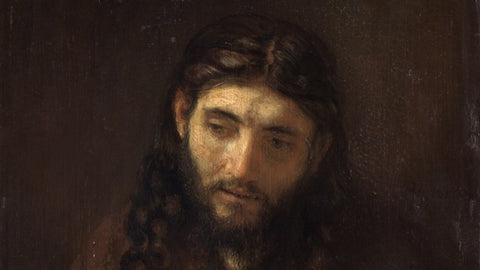
Consider the many different ways Jesus has been portrayed over the centuries or the ways his name has been employed in support of this or that cause. N. T. Wright, a prominent Jesus scholar and Anglican Bishop, observes that he is “almost universally approved of” but for “very different and indeed often incompatible reasons.” If this is the case, then we wondered what Jesus were we worshiping and whether that Jesus was one of our own making?
During the past half-century historians have made significant strides examining the most recently discovered source materials in order to think once again about existing documents like the four Gospels. The aim was to reconstruct the Jesus who the men and women in first-century Palestine would recognize and follow. Jesus was born into an ancient society constrained by millennia of social, theological, and political practices perpetuated by the minority ruling elite and facilitated by a vast majority of souls who knew of no other way. Periodically prophets would rail against the system in the name of God. But the great, colossus of ancient Rome remained sustained through the oppression of individuals, the very individuals that Jesus came to invite into a new, righteous Kingdom.
The Jesus of history and the Gospels largely displaced the conventions of his day with regard to women and the family, as well as the social standing of the poor, the wealthy, and the outcast.
On Women:
In the twenty-first century, when issues regarding the roles of men and women in religious environments are alive and controversial, Jesus’s treatment of women was prescient. His example and the privileges afforded the first female Christians provide important perspectives. The subject takes on added significance as we appreciate the meaning of the priestly roles that women play in Latter-day Saint temples. Echoing what N. T. Wright suggests in his recent book Surprised by Scripture, we must “think carefully about where our own cultures, prejudices, and angers are taking us, and make sure we conform not to the stereotypes the world offers but to the healing, liberating, humanizing message of the gospel.” He continues, “[we live in a time when] we need to radically change our traditional pictures of what men and women are and of how they relate to one another within the church, and indeed of what the Bible says on this subject.”
On the Family:
What little Jesus had to say about the family is jarring to modern ears. He replaced the household of his day with a new universal family called the Kingdom of God where all were brothers and sisters. All were welcome: the poor and the rich, men and women, bond and free, high and low, Jew and Gentile. Members were asked to live in a communal order where everyone had what they needed.
On the Poor:
At the end of Jesus’s ministry, his priorities had not shifted from those he announced by way of the Isaiah text he read as he stood in the synagogue in Nazareth. Prior to his betrayal, Jesus spoke about the Final Judgment. He reminded those who heard him then, as well as those who hear him today, that when our lives are weighed in the balance, we will be judged not on what we know, or how many things we owned, or on how many church meetings we attended; rather, we will be judged on the basis of how well we loved our neighbors, and how well we fed the hungry, clothed the naked, cared for the sick, and visited those in need (Matt. 25:31–46).
On the Wealthy:
Matthew’s Gospel records that Jesus spoke to a “rich young man” who, by his own report, kept all the commandments in Torah, the Mishnah, and the Oral Traditions. Jesus asked him to go one step further and distribute all his wealth equally amongst the poor in order to be a part of God’s kingdom (Matt. 19:21-22). The apocryphal Gospel of Hebrews records that when the young man could not take that step, he “began to scratch his head because he did not like that command.” But then, Mark’s Gospel says, “Jesus felt genuine love for [this man]” (Mark 10:21 NLT).
Father James Martin, in a memoir on his pilgrimage to the Holy Land in 2014, writes about his encounter with the story, standing on the supposed spot where Jesus told it: “Jesus ‘loved him’? Where did that come from? I had heard this Gospel story dozens of times. How had I missed that line? . . . Those three words . . . altered the familiar story and thus altered how I saw Jesus. No longer was it the exacting Jesus demanding perfection; it was the loving Jesus offering [agency]. Now I [and we] could hear him utter those words with infinite compassion for the man. . . . Jesus explicitly offers a promise of abundance to everyone” (Jesus: a Pilgrimage, 271).
Jesus invited all to be bound to him by the “covenant of salt.”
The Covenant of Salt is a three-part obligation. The meaning of the name of the covenant would have been obvious to the men and women who followed him: salt was and is the root word of salvation and it was an enormously valuable commodity in their day. At the end of our study, we came to understand a little better what N. T. Wright observes – that what mattered most to Jesus was that his true disciples were “the kind of people through whom the kingdom will be launched on earth.” Being like Jesus meant that each of us qualified for heaven through serving his “lambs.” Being like Jesus was about loving others and thereby transforming the earth, making it a Godlike place. It was what Jesus earnestly prayed for and by example asked us to pray for: “Thy kingdom come. Thy will be done in earth, as it is in heaven” (Matt. 6:10 KJV; emphasis added). God’s ultimate rule on earth will come about because we, as true disciples of Jesus Christ, are the light of the world and the salt of the earth (Matt.5:13, 14 KJV). We have covenanted. We have come away from this pilgrimage with a resolve to “have salt in ourselves, and have peace one with another” (Mark 9:50 KJV).
James and Judith McConkie will be speaking and signing books at Writ & Vision in Provo, Utah, on Tuesday, January 30 at 7 pm, and at Benchmark Books in Salt Lake City on Wednesday, February 7 at 5:30 pm..These events are free to the public.
 James W. McConkie has JD from the S. J. Quinney College of Law at the University of Utah. His practice has focused in the area of torts and civil rights for more than four decades. He has been an adjunct professor at Westminster College teaching Constitutional law for non-lawyers. He has taught Church History and New Testament courses for BYU’s Division of Continuing Education for over 15 years with his wife Judith and is the author of Looking at the Doctrine and Covenants for the Very First Time. In 2017 he and his law partner Bradley Parker created the Refugee Justice League, a non-profit organization of attorneys and other professionals offering pro-bono help to refugees who have been discriminated against on the basis of their religion, ethnicity, or national origin.
James W. McConkie has JD from the S. J. Quinney College of Law at the University of Utah. His practice has focused in the area of torts and civil rights for more than four decades. He has been an adjunct professor at Westminster College teaching Constitutional law for non-lawyers. He has taught Church History and New Testament courses for BYU’s Division of Continuing Education for over 15 years with his wife Judith and is the author of Looking at the Doctrine and Covenants for the Very First Time. In 2017 he and his law partner Bradley Parker created the Refugee Justice League, a non-profit organization of attorneys and other professionals offering pro-bono help to refugees who have been discriminated against on the basis of their religion, ethnicity, or national origin.
 Judith E. McConkie has an MFA in printmaking from BYU and a PhD in philosophy of art history and museum theory from the University of Utah. She has taught art history at the secondary and then university levels for over 40 years. She was the Senior Educator at BYU’s Museum of Art and Curator of the Utah State Capital during its major renovation project from 2004–2010. During that time she authored With Anxious Care: the Restoration of the Utah Capital. She continues to teach in BYU’s Division of Continuing Education with her husband James. She has published in Sunstone and Dialogue: A Journal of Mormon Though and has presented at Sunstone’s annual symposium. Her prints and watercolors have been exhibited nationally and in the Henry Moore Gallery in London, England. She and James are the parents of three children and 12 grandchildren.
Judith E. McConkie has an MFA in printmaking from BYU and a PhD in philosophy of art history and museum theory from the University of Utah. She has taught art history at the secondary and then university levels for over 40 years. She was the Senior Educator at BYU’s Museum of Art and Curator of the Utah State Capital during its major renovation project from 2004–2010. During that time she authored With Anxious Care: the Restoration of the Utah Capital. She continues to teach in BYU’s Division of Continuing Education with her husband James. She has published in Sunstone and Dialogue: A Journal of Mormon Though and has presented at Sunstone’s annual symposium. Her prints and watercolors have been exhibited nationally and in the Henry Moore Gallery in London, England. She and James are the parents of three children and 12 grandchildren.
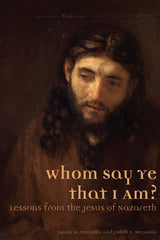 |
Whom Say Ye that I Am? Lessons from the Jesus of Nazareth Available Jan 30, 2018 |
Q&A with James and Judith McConkie for Whom Say Ye that I Am? Lessons from the Jesus of Nazareth December 19 2017
Whom Say Ye That I Am? Lessons from the Jesus of Nazareth
by James W. McConkie and Judith E. McConkie
Available January 30, 2018
Pre-order Your Copy Today
How did both of you become interested in writing about Jesus from a cultural perspective?
For over 15 years we have taught CES together and have enjoyed an ongoing conversation about the gospel. Our daughter attended the BYU study abroad program in Jerusalem. When she returned she started an even more intensive discussion with our family about Jesus -- what he stood for and what he did. This conversation culminated in our desire to write this book together. We have always taught classes together and are stronger when we work as a team.
What do you feel distinguishes Whom Say Ye? from other work written about Jesus, particularly for an LDS audience?
All of us create a Jesus in our own image—a self-validating Jesus. What we mean by that is that there are as many versions of Jesus as there are religions. He is wheeled out in support of almost any “good” cause: socialism, capitalism, pacifism, use of force, government programs to help the poor and not help the poor. He was even used by the South to support slavery during the Civil War and by the North to oppose it.
During the last 20 years or so historical Jesus scholars have stripped away centuries of assumptions about Jesus in an attempt to reveal more closely who he really was, what he thought, what motivated him (made him angry or sad) and what kind of a community he was trying to establish. This book examines the historical Jesus literature and what its implications may be for the Mormon community and other Christian faiths.
We did not want to devise a self-validating Jesus who just happened to agree with our view of things—a Jesus that could make us feel good about whatever we happened to be thinking or doing at the time. Making Jesus in our own image was no God at all, and certainly not one who could save us.
What sources did you rely on for this study?
We decided to use only the four Gospels and preeminent Jesus scholars such as N. T. Wright, Marcus J. Borg, John Dominic Crossan, Bart Ehrman, Raymond Brown, Michael White, Lisa Sergio, Karen Torgesen, Anthony Salderini and others. We also consulted newer alternate translations of the Bible, history texts and a number of respected commentaries.
What is the major focus of Whom Say Ye?
In general, we focus on how Jesus treated and interacted with individuals and then with the institutions of his day: the Jewish religious establishment and the Roman Empire. Almost without exception he was inclusive, compassionate, and forgiving with individuals, and angry and confrontational with institutions that exploited the poor and caused unnecessary human suffering—the social misery caused by cultural structural systems of society.
How has the book changed your understanding and appreciation for Jesus?
In writing this book, we found it reinforced the idea that all men and women everywhere, no matter what religion, culture, race, or background are equally important and valuable in the sight of God. We witnessed in the pages of the four Gospels the deep compassion Jesus had for humankind.
What do you hope readers will take away from the book?
We hope those who read this book find a clearer of view of who Jesus is and what he stands for and a greater desire to be more like he him.
Pre-order Your Copy Today
Ebook Flash Sale on Mormon titles starts December 12th! December 11 2017

Greg Kofford Books is pleased to announce our second annual EBOOK FLASH SALE on select titles on Tuesday, December 12th and Wednesday, December 13th! Pick up a few titles that have been on your reading list for as low as $2.99!
Click image below to purchase. Offer is valid for Kindle ebooks only.
 |
Future Mormon: Essays in Mormon Theology |
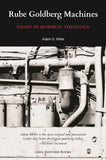 |
Rube Goldberg Machines: Essays in Mormon Theology |
 |
The Mormoness; or The Trials of Mary Maverick: A Narrative of Real Events |
 |
For Zion: A Mormon Theology of Hope |
 |
Who Are the Children of Lehi? DNA and the Book of Mormon |
 |
Fire on the Horizon: A Meditation on the Endowment and Love of Atonement |
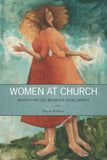 |
Women at Church: Magnifying LDS Women's Local Impact |
 |
Joseph Smith's Polygamy: Toward a Better Understanding |
 |
Knowing Brother Joseph Again: Perceptions and Perspectives |
 |
The End of the World, Plan B: A Guide for the Future |
 |
The Garden of Enid: Adventures of a Weird Mormon Girl, Part One |
 |
Perspectives on Mormon Theology: Apologetics |
Twelve Days of Kofford 2017 November 21 2017
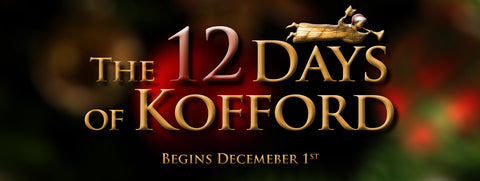
Greg Kofford Books is once again pleased to offer twelve days of discounted holiday shopping from our website!
HERE IS HOW IT WORKS: Every morning from Dec 1th through the 12th, we will be posting a DISCOUNT CODE on our Facebook or Twitter pages. Use this discount code on the corresponding day to receive 30% off select titles. The final day will be an e-book flash sale on Amazon.com.
To help you plan, here are the dates, titles, and sale prices we will be offering beginning Dec 1st. These sales are limited to available inventory. You must follow our Facebook or Twitter pages to get the discount code. Orders over $50 qualify for free shipping. Customers in the Wasatch Front area are welcome to pick orders up directly from our office in Sandy, UT.
Day 1 — Brant Gardner collection
 |
Second Witness, Vol 1: First Nephi $39.95 hardcover |
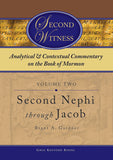 |
Second Witness, Vol 2: Second Nephi through Jacob $39.95 hardcover |
 |
Second Witness, Vol 3: Enos through Mosiah $39.95 hardcover |
 |
Second Witness, Vol 4: Alma $49.95 hardcover |
 |
Second Witness, Vol 5: Helaman through Nephi $39.95 hardcover |
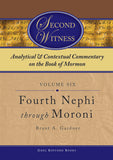 |
Second Witness, Vol 6: Fourth Nephi through Moroni $39.95 hardcover |
 |
The Gift and the Power: Translating the Book of Mormon $34.95 paperback |
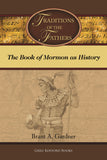 |
Traditions of the Fathers: The Book of Mormon as History $34.95 paperback |
 |
The Garden of Enid: Adventures of a Weird Mormon Girl $22.95 paperback |
 |
The Garden of Enid: Adventures of a Weird Mormon Girl $22.95 paperback |
Day 3 — The Mormon Image in Literature
 |
The Mormoness; Or, The Trials of Mary Maverick: $12.95 paperback |
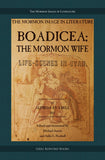 |
Boadicea; the Mormon Wife: Life Scens in Utah $15.95 paperback |
 |
Dime Novel Mormons $22.95 paperback |
 |
Women at Church: Magnifying LDS Women's Local Impact $21.95 paperback |
 |
Mormon Women Have Their Say: Essays from the Claremont Oral History Collection $31.95 paperback |
 |
Voices for Equality: Ordain Women and Resurgent Mormon Feminism $32.95 paperback |
 |
Joseph Smith's Polygamy, Vol 1: History $34.95 paperback |
 |
Joseph Smith's Polygamy, Vol 2: History $34.95 paperback |
 |
Joseph Smith's Polygamy, Vol 3: Theology $25.95 paperback |
 |
Joseph Smith's Polygamy: Toward a Better Understanding $19.95 paperback |
 |
Modern Polygamy and Mormon Fundamentalism: The Generations after the Manifesto $31.95 paperback |
 |
Mormon Polygamous Families: Life in the Principle $24.95 paperback |
 |
Prisoner for Polygamy: The Memoirs and Letters of Rudger Clawson at the Utah Territorial Penitentiary, 1884–87 $29.95 paperback |
 |
Who Are the Children of Lehi? DNA and the Book of Mormon $15.95 paperback |
 |
“Let the Earth Bring Forth”: Evolution and Scripture $15.95 paperback |
 |
Mormonism and Evolution: The Authoritative LDS Statements $15.95 paperback |
 |
Parallels and Convergences: Mormon Thought and Engineering Vision $24.95 paperback |
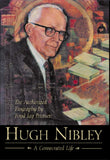 |
Hugh Nibley: A Consecrated Life $32.95 hardcover |
 |
“Swell Suffering”: A Biography of Maurine Whipple $31.95 paperback |
 |
William B. Smith: In the Shadow of a Prophet $39.95 paperback |
 |
LDS Biographical Encyclopedia, 4 Vols $259.95 paperback |
 |
The Man Behind the Discourse: A Biography of King Follett $29.95 paperback |
 |
Liberal Soul: Applying the Gospel of Jesus Christ in Politics $22.95 paperback |
 |
A Different God? Mitt Romney, the Religious Right, and the Mormon Question $24.95 paperback |
 |
Common Ground—Different Opinions: Latter-day Saints and Contemporary Issues $31.95 paperback |
 |
Even Unto Bloodshed: An LDS Perspective on War $29.95 paperback |
 |
War & Peace in Our Time: Mormon Perspectives $29.95 paperback |
 |
The End of the World, Plan B: A Guide for the Future $13.95 paperback |
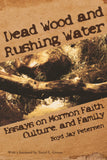 |
Dead Wood and Rushing Water: Essays on Mormon Faith, Culture, and Family $22.95 paperback |
 |
Mr. Mustard Plaster and Other Mormon Essays $20.95 paperback |
 |
Writing Ourselves: Essays on Creativity, Craft, and Mormonism $18.95 paperback |
 |
On the Road with Joseph Smith: An Author's Diary $14.95 paperback |
 |
Hearken O Ye People: The Historical Setting of Joseph Smith's Ohio Revelations $34.95 hardcover |
 |
Fire and Sword: A History of the Latter-day Saints in Northern Missouri, 1836–39 $36.95 hardcover |
 |
A House for the Most High: The Story of the Original Nauvoo Temple $29.95 paperback |
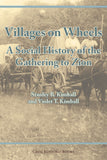 |
Villages on Wheels: A Social History of the Gathering to Zion $24.95 paperback |
 |
Mormonism in Transition: A History of the Latter-day Saints, 1890–1930, 3rd ed. $31.95 paperback |
Day 11 — International Mormonism
 |
Tiki and Temple: The Mormon Mission in New Zealans, 1854–1958 $29.95 paperback |
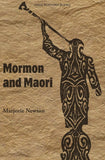 |
Mormon and Maori $24.95 paperback |
 |
The Trek East: Mormonism Meets Japan, 1901–1968 $39.95 paperback |
 |
From Above and Below: The Mormon Embrace of Revolution, 1840–1940 $34.95 paperback |
 |
The History of the Mormons in Argentina $24.95 paperback |
 |
For the Cause of Righteousness: A Global History of Blacks and Mormonism, 1830–2013 $32.95 paperback |
Author spotlight: Julie M. Smith November 08 2017
 |
|||||||
|
Julie M. Smith, author of Search, Ponder, and Pray: A Guide to the Gospels, part of the Contemporary Studies in Scripture series, and editor of As Iron Sharpens Iron: Listening to the Various Voices of Scripture, winner of the 2016 AML best religious non-fiction award. When and how did you decide to pursue religious studies and Biblical Studies? What is your emphasis in Biblical Studies? I was in college, at UT Austin, as an English major. And I was taking a British literature class from a professor who wanted us to understand the religious backdrop to what we were reading. I was fascinated by her brief description of early Christianity, and that began my interest. Within Biblical Studies, I have two main focal points of interest. The first is what I can non-androcentric interpretation. While I'm comfortable using the word "feminist" in other contexts, in this context I like "non-androcentric" because what I am striving to do is to remove a male focus from interpretation (not necessarily to replace it with a feminist ideology). Secondly, I am interested in literary interpretation. In what ways do you think Search, Ponder, and Pray and As Iron Sharpens Iron can help Latter-day Saints gain a deeper appreciation for and understanding of scripture? Search, Ponder, and Pray presents some background material and then it leaves the reader to reach her own conclusions. I'm trying to model a process there that I hope all teachers would use. But I'm also trying to give students of the scripture some tools with which to do their own thinking about what they are reading. Similarly, with the Iron book, the goal was to present two not-necessarily-harmonious viewpoints about an issue, each couched in the voice of a scriptural author, in order to get the reader thinking about various arguments. You have taught LDS seminary. If those in charge of seminary curriculum came to you for advice in shaping future instruction manuals and training, what advice would you offer? I haven't taught seminary in a long time. But my advice for seminary curriculum would be this: y'all did a great job on the church history side in being sure that our youth are exposed to the difficult issues in church history in a faithful context so that they won't be blindsided by these issues when they are older. Now we need to do that for the Bible as well. Our materials on the Old and New Testament read as if they were written in the late 19th century. We saw the need to update church history materials to address 21st century needs--the next step is to make the same changes for our Bible curriculum. Thanks, Julie! |
|||||||
|
Free Scriptural Theology ebook for newsletter subscribers! October 30 2017
FREE EBOOK FOR NEWSLETTER SUBSCRIBERS
Perspectives on Mormon Theology: Scriptural Theology
Edited by James E. Faulconer and Joseph M. Spencer
Part of the Perspectives on Mormon Theology series
$24.95 FREE FOR OUR NEWSLETTER SUBSCRIBERS (Limited time)
Greg Kofford Books is pleased to offer for a limited time a free ebook version of Scriptural Theology, the first volume in the Perspectives on Mormon Theology series.
This volume is edited by James E. Faulconer and Joseph M. Spencer and seeks to offer a variety of perspectives regarding the nature and meaning of scripture for Latter-day Saints.
Book description:
The phrase “theology of scripture” can be understood in two distinct ways. First, theology of scripture would be reflection on the nature of scripture, asking questions about what it means for a person or a people to be oriented by a written text (rather than or in addition to an oral tradition or a ritual tradition). In this first sense, theology of scripture would form a relatively minor part of the broader theological project, since the nature of scripture is just one of many things on which theologians reflect. Second, theology of scripture would be theological reflection guided by scripture, asking questions of scriptural texts and allowing those texts to shape the direction the theologian’s thoughts pursue. In this second sense, theology of scripture would be less a part of the larger theological project than a way of doing theology, since whatever the theologian takes up reflectively, she investigates through the lens of scripture.
The essays making up this collection reflect attentiveness to both ways of understanding the phrase “theology of scripture.” Each essay takes up the relatively un-self-conscious work of reading a scriptural text but then—at some point or another—asks the self-conscious question of exactly what she or he is doing in the work of reading scripture. We have thus attempted in this book (1) to create a dialogue concerning what scripture is for Latter-day Saints, and (2) to focus that dialogue on concrete examples of Latter-day Saints reading actual scripture texts.
Contributors: James E. Faulconer, Joseph M. Spencer, Robert Couch, Adam S. Miller, Eric D. Huntsman, Claudia L. Bushman, Bruce W. Jorgensen, Jane Hafen, Jenny Webb, George B. Handley
Subscribe to our free newsletter by entering your email address above and receive instructions for downloading your free ebook.
Once you have signed up for our newsletter, you will recieve a welcome email that will provide instructions for downloading the ebook. Please read these instructions carefully. Check your junk folder if you do not see the welcome email.
Preview Perspectives on Mormon Theology: Apologetics June 23 2017

Perspectives on Mormon Theology:
Apologetics
This volume in the Perspectives on Mormon Theology series is an exploration of Mormon apologetics—or the defense of faith. Since its very beginning, various Latter-day Saints have sought to utilize evidence and reason to actively promote or defend beliefs and claims within the Mormon tradition. Mormon apologetics reached new levels of sophistication as believers trained in fields such as history, Near-Eastern languages and culture, and philosophy began to utilize their knowledge and skills to defend their beliefs.
The contributors to this volume seek to explore the textures and contours of apologetics from multiple perspectives, revealing deep theological and ideological fissures within the Mormon scholarly community concerning apologetics. However, in spite of pressing differences, what each author has in common is a passion for Mormonism and how it is presented and defended. This volume captures that reality and allows readers to encounter the terrain of Mormon apologetics at close range.
2016 AML Awards two outstanding Greg Kofford Books titles! April 24 2017
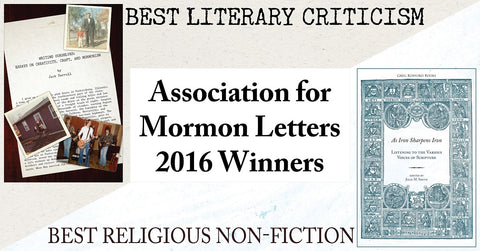
The Association for Mormon Letters held its annual meeting this past weekend, April 22-23, 2017. This year, the event was held at Utah Valley University in Orem, UT. The keynote speaker was Phyllis Barber, author of eight books and winner of the Smith-Pettit Foundation and the Association for Mormon Letters Award for Outstanding Contribution to Mormon Letters. Acclaimed science fiction author Orson Scott Card and renowned poet and short-story author Susan Howe, were also presented with AML Lifetime Achievement Awards.
Among the winners at the AML Awards Ceremony were two Greg Kofford Books titles: As Iron Sharpens Iron: Listening to the Various Voices of Scripture, edited by Julie M. Smith, won the 2016 Best Religious Non-fiction Award. From the citation:
As Iron Sharpens Iron: Listening to the Various Voices of Scripture, edited by Julie M. Smith, won the 2016 Best Religious Non-fiction Award. From the citation:
“As Iron Sharpens Iron provides an excellent study on the challenges found in the Mormon scriptural cannon in a manner that is very intriguing and is sure to challenge Mormon readers to rethink how they approach their scriptural studies and thought.”
 Writing Ourselves: Essays on Creativity, Craft, and Mormonism, by Jack Harrell, won the 2016 Best Literary Criticism Award. From the citation:
Writing Ourselves: Essays on Creativity, Craft, and Mormonism, by Jack Harrell, won the 2016 Best Literary Criticism Award. From the citation:
“A worthy successor to the work of Eugene England. . . . At his most engaging, Harrell speaks bluntly, knowingly, and aspirationally regarding the plight of the serious Mormon writer, and by extension, their audience. His advice to writers to be honest and to embrace their weirdness, among other things, seeks to reframe the discussion of Mormonism’s cultural debits and credits into a workable and motivational mode of authentic creativity.”
Congratulations to Julie M. Smith, Jack Harrell, and all of the other winners of the 2016 AML Awards! We are proud to have such distinguished talented authors on our roster!
For the complete list of 2016 AML Award winners, click here.
For a complete list of Greg Kofford Books award-winning titles, click here.
For a full catalog (pdf) of Greg Kofford Books titles click here.
Q&A with Joseph Spencer for The Vision of All February 27 2017
Order Your Copy Today
Q:How and when did you begin to recognize the need for a different approach to studying the Isaiah sections in the Book of Mormon?
A: Well, I've always been overconfident about what I might be able to accomplish, so I first decided to tackle Isaiah in earnest when I was a teenager. Of course, I understood little, because I knew no real resources. I read carefully through the King James Version of the text, and I followed every footnote in the LDS edition. I spent a whole summer doing that, and I gained little more than some familiarity. I turned to Isaiah again shortly after my mission, when I was taking an introductory course on Hebrew. Studying straight from the Hebrew, using dictionaries and a few other tools, I felt like I came to understand the text a bit better, though I only worked at the time through about five chapters of Isaiah. At about the same time, I discovered a few other scholarly resources, especially the old FARMS volume Isaiah in the Book of Mormon. Those helped orient me in Isaiah's world a bit better, but I wasn't yet doing the sort of thing I've come to do now.
What changed things was twofold. First, my wife, Karen, and I were studying First Nephi, and we struck on some structural features of Nephi's record that make clear he means to emphasize Isaiah above all else in his record. (I've talked about these structural features in my books.) That spurred me to give closer attention to Nephi's treatment of Isaiah than I had before. Up to that point, I'd tried only to approach Isaiah on his own terms, using just a few scholarly resources. But stumbling onto the idea that I could see how Nephi reads Isaiah fired me up. And it got me more interested than before in understanding Isaiah on his own terms as well. I figured that understanding Isaiah himself would allow me to see how Nephi was using him in his own inventive ways. So I began, finally, to read the massive scholarly literature on Isaiah. Second, I was asked to teach early-morning seminary one year, while we were living in Oregon. The course of study was the Old Testament, and I asked for permission to focus the whole year just on Genesis, Job, and Isaiah. The bishop granted it, and so I worked with my students all the way through Isaiah for three months. In preparation for each class discussion, I did nothing but read commentaries, and then we came together and just wrestled with the text of Isaiah. By that point, I was finishing work on my first book, An Other Testament, which is largely about how the Book of Mormon handles Isaiah, so working carefully through every line of Isaiah with my students helped me to see even better how inventive and interesting Nephi is in his reading of Isaiah.
So I suppose it's been a circuitous path. The short answer is that it was only when I saw (a) that Nephi really means to privilege Isaiah and (b) that he deliberately reads Isaiah in his own way that my project began to take shape.
Q: In what ways does Nephi use Isaiah inventively? And how might his usage differ from scholarly consensus on Isaiah's original intent?
A: On my reading, Nephi explicitly tells his readers that he's reading Isaiah inventively. I believe this is what he tries to signal with the word "likening" (see, for example, 1 Ne. 19:23). He sees Isaiah's prophecies as having a meaning of their own, which we might call their immediate meaning. But then he sees the possibility of finding in Isaiah's prophecies a basic pattern that's replicated in Israel's history at times and in places where Isaiah wasn't himself focused. This is clearest when he applies prophecies from the Book of Isaiah, which in their biblical context are clearly about the return of exiled Jews from Babylon during the sixth century before Christ, to things he sees in vision regarding Lehi's descendants in modern times. He explicitly recognizes that passages from Isaiah have their natural fulfillment in the return of Jews from exile to the land of Judah, but then he suggests that the same passages can be likened to the return of latter-day Lamanites to the gospel of Christ their ancestors knew. He seems to see Isaiah as outlining patterns of how God works with Israel, whether in whole or in part, whether anciently or in modern times, again and again. And so he sees the possibility of adapting Isaiah texts to events that arguably outstrip the straightforward meaning of those texts. That is, I think, a rather responsible (because self-aware) form of inventive interpretation.
Of course, such an approach to the Book of Isaiah differs drastically from the kinds of approaches on offer in scholarly work on Isaiah today. For one, Nephi asks a rather different set of questions about Isaiah than do modern scholars. Academic work on Isaiah aims at reconstructing the historical origins and context of the Book of Isaiah, as well as the processes through which what originated with Isaiah came to have the shape we're familiar with from the Bible. Nephi isn't at all interested in these questions. He's apparently familiar with the basic, straightforward historical meaning of prophecies in the Book of Isaiah, but he moves pretty quickly beyond such meanings to explore other possible meanings and applications. Further, though, there are many other ways Nephi seems to differ from the conclusions of modern scholarly work on Isaiah. For instance, he clearly regards the whole of Isaiah 2–5 as a larger unit of text (as can be seen from connecting words and original chapter breaks in the Book of Mormon), but most interpreters today regard those chapters as divisible into at least two larger units (Isaiah 2–4 and Isaiah 5, for example). That only scratches the surface, of course. There are still larger issues of conflict between the way Nephi (or really, the Book of Mormon quite generally) handles Isaiah and the conclusions drawn by modern scholarship, but that would take some work to develop.
Q: How does The Vision of All negotiate this sometimes tense or conflicting terrain of modern scholarship and a more philosophically-grounded reading of Isaiah?
A: First and foremost, I think it's important just to make clear that there are various ways of reading Isaiah, and that Nephi acknowledges the uniqueness of his approach. We're far too prone as Latter-day Saints to think that there's one correct answer to questions about the meaning of a passage of scripture. We tend to think that we're done with a text once we know the "right" interpretation. And, in many ways, that's mirrored in modern scholarship, although modern scholars come up with a very different set of answers about the meanings of Isaiah's writings. The result is that too many academics think that average believers (Mormon or otherwise) simply get scripture wrong, and average believers return the compliment by claiming that scholars in turn get scripture wrong. What Nephi teaches us, I think, is that a given passage of scripture can have a variety of meanings and applications. Meaning is dynamic and contextualized by the act of reading. The result is that there's more a history of interpretation than there's a definite meaning for any particular passage or text. In Nephi's writings we can glimpse Lehi's approach to Isaiah, and it's quite different from Nephi's. And then he sets his own interpretations side by side with Jacob's, which are similar but far from identical. Even within just the sermon Nephi quotes from Jacob in 2 Nephi 6–10, we can track two rather different interpretations of one and the same passage (Isa. 49:22–23).
Just getting clear about all this can help us to feel a good deal more at home with Isaiah. Our job isn't to figure out the one true meaning of Isaiah, but to let Isaiah's words work on us. They provide us with patterns and images, relationships and themes. Our task is to dwell in the text and to let it begin to shape the way we see things. We won't be able to do this very well if we don't become familiar with the range of meanings the text can accommodate. So we ought to read Isaiah scholarship to become familiar with historical reconstructions of Isaiah's (apparent) original meaning. In fact, it's important to read some of this scholarship just to become familiar with the fact that no two interpreters agree on Isaiah's meaning. There are key passages in Isaiah that are literally interpreted in a dozen different ways by major modern interpreters. And then it'd be helpful for us if we became more familiar with the history of interpretation of Isaiah. How have Jews read Isaiah 53? Do different sorts of Christians read Isaiah 11 in different ways? How does a Seventh-day Adventist read Isaiah's references to the remnant by comparison with a mainline Protestant? And then how might we, as Latter-day Saints, find meaning in Isaiah? These are questions that go a good deal further than I ever do in The Vision of All, but I try in the book to open the way to these kinds of approaches, since I argue that Nephi does something like this in his own context.
Q: Can you give us a concrete example of a passage that Latter-day Saints may be prone to interpret a specific way, but which consideration of other interpretations, both within modern scholarship and other religious traditions, may be beneficial?
A: It's probably easiest here just to begin with an example that's decently known already. Most Latter-day Saints are familiar with those passages in Isaiah that play a prominent role in Handel's Messiah. "Behold, a virgin shall conceive, and bear a son, and shall call his name Immanuel" (Isa. 7:14). "For unto us a child is born, unto us a son is given: and the government shall be upon his shoulder: and his name shall be called Wonderful, Counsellor, The mighty God, The everlasting Father, The Prince of Peace" (Isa. 9:6). These kinds of passages are generally understood by average Mormons to be straightforward prophecies of Jesus Christ's birth. Modern scholars, however, generally read these passages in a fundamentally different way, say, as prophecies concerning events that were to happen within Isaiah's own lifetime. Some familiarity with the history of Jewish interpretation also helps to reveal how differently these texts can be read. Even many modern Christians, usually in mainline Protestantism, don't read these passages as direct references to Jesus Christ. It turns out that there are many different ways of making sense of these texts. They can be read as predictions of Jesus's birth. But they can also be read in many other ways, often informatively. Now, I don't mean to suggest that the other ways are necessarily the best ways. They may or may not be. But any reading of these passages will be stronger and more interesting if it acknowledges that it approaches the text from a certain perspective, from the perspective of a certain faith.
And really, that's what matters here, I think. When I say that we can benefit from familiarity with the ways that other traditions or modern scholars read certain passages of Isaiah, I mean that we can grow out of the naive assumption that there's only one possible way to understand a text (an assumption that too easily leads us to think that everyone who doesn't see things our way is simply stupid), and we can grow into a recognition that our readings are rooted in our own system of beliefs. I might put that another way: we can grow out of the naive idea that our interpretations of Isaiah are a matter of straightforward knowledge, and we can grow into the deeply mature realization that our interpretations of Isaiah are a matter of invested faith. Now, I suspect that most who become a bit more familiar with the variety of interpretations of Isaiah will come to interpret some of the texts in a new way. I certainly have as I've studied. And that's good, I think. But I think also that the best readers will also find reasons to defend uniquely Mormon interpretations of many passages of Isaiah, even while recognizing that those interpretations are rooted in a very specific perspective of faith. Why shouldn't we grow all the fonder of interpretations that grow directly out of our faith commitments, even as we recognize that the text can be read in many ways? I think we should, that we should feel free to defend an understanding of Isaiah that's informed by other traditions and scholarly work but that's simultaneously rooted in the Restoration.
Q: Switching topics, let's talk about the style of the book: The Vision of All is laid out as a series of twenty-five classroom-style lectures. Give us some insight into your decision to use this approach and if it had any precedent that inspired you.
A: A few things came together that led me to do the book this way. First, over the past few years, I'd begun to write some of my public presentations in this style, instead of always delivering a more formal or finished paper. I found I really enjoyed the writing process of producing something less formal, something where I don't have to tie up every loose thread and can focus on rhetorical delivery. Experimenting with that form of writing got me thinking. Second, I'd begun teaching courses on the Book of Mormon at Brigham Young University, and I'd found that students responded very well to my lectures on the Isaiah material. These weren't written up even in an informal style, but I began thinking that the sort of presentations I was making in the classroom with Isaiah might be more accessible to Latter-day Saints in general. Finally, I've been working steadily on Isaiah in the Book of Mormon for more than a decade now, and I began to think that I had too many ideas piled up in my head that really needed to be put in writing in some form or another, and writing up popular lectures would allow me to work quickly. These all came together at once, and so I began writing the book, one lecture a week.
In writing the book, I didn't try to follow any particular precedent. At the same time, I thought often while I was writing the book about a few similar projects. I thought sometimes about Hugh Nibley's four volumes of lectures on the Book of Mormon, which are literal transcripts of a four-semester honors course he taught on the Book of Mormon at BYU. I haven't read or watched all of those lectures, but certainly some of them, and I often thought about him providing a kind of example of something useful. Of course, my style in the lectures is quite different from Nibley's. Nibley largely began at one end of the Book of Mormon and worked his way to the other end, and he didn't always seem to have a sense of what he wished to accomplish in any given hour of lecture. I tried to impose a larger architectonic on the project, and I tried to assign myself several specific tasks in each lecture. But then, like Nibley, I let the time limits (or really, for me, word limits) decide where I had to stop. And so a lot of the lectures wrap up with overly quick summations of things. But that's meant to give readers a feel for how much more needs to be said than can be said about the subject of Isaiah in the Book of Mormon. I hope it's effective.
Q: Final question: Where do you hope your readers will go from here in their study of Isaiah?
A: I hope they'll start studying Isaiah on their own! Really, I hope the book itself makes clear that I want readers to take this just as a primer, a way of getting started. A recent review of The Vision of All criticized it because many of the lectures end with something like "Ack! We're out of time! We can't really tie up all these loose ends or get into everything we'd like!" The reviewer suggested that I was unwilling to write an extra thousand words to tie all the loose ends together, or that I was too lazy to work my way toward appropriate conclusions. But the fact is that I deliberately wrote the lectures this way. I want readers to feel how much work needs to be done, and I want them to feel responsible for that work. I want them to see how we might go about working on Isaiah in the Book of Mormon, but I want them to know that I can't and won't do all that work for them. Neither I nor anyone else is going to write the book that sorts out everything important that needs saying about Isaiah in the Book of Mormon. But there's a danger in writing scholarly books, a danger that readers might think that reading the scholarly book is all that's needed. So I wanted to write a book that does scholarly work and nonetheless makes perfectly clear that it just points in the right direction, rather than travels the whole length of the road to its ultimate destination.
I'd love to see dozens, hundreds, even thousands of Latter-day Saint readers of Isaiah, scholarly and not. We of all people ought to be invested in making sense of Isaiah's writings. Perhaps I could even wish for the emergence of a marked Latter-day Saint approach to Isaiah, one that becomes recognized as uniquely Mormon and worthy of interest from outsiders. I'd love to see that Latter-day Saint reading be profoundly responsible academically, fully informed about the best scholarly literature. But I'd love just as much to see that Latter-day Saint reading be deeply invested in the unique faith claims of the Restoration, deeply rooted in faithfulness to what Mormonism claims about the world. Our own unique scriptures ask us to take Isaiah seriously, but we tend to leave that task to scholars whose writings we can barely understand or to oddball amateurs who borrow their interpretations from the fundamentalist Christian tradition. What if we began to work on Isaiah in a way that didn't ultimately feel it necessary to conform to every scholarly conclusion (while nonetheless being aware of them) but also didn't look like wacky esoteric speculation? I think we could forge an interpretive tradition that could speak to the world.
Order Your Copy Today
- Page 1 of 2
- Next





















